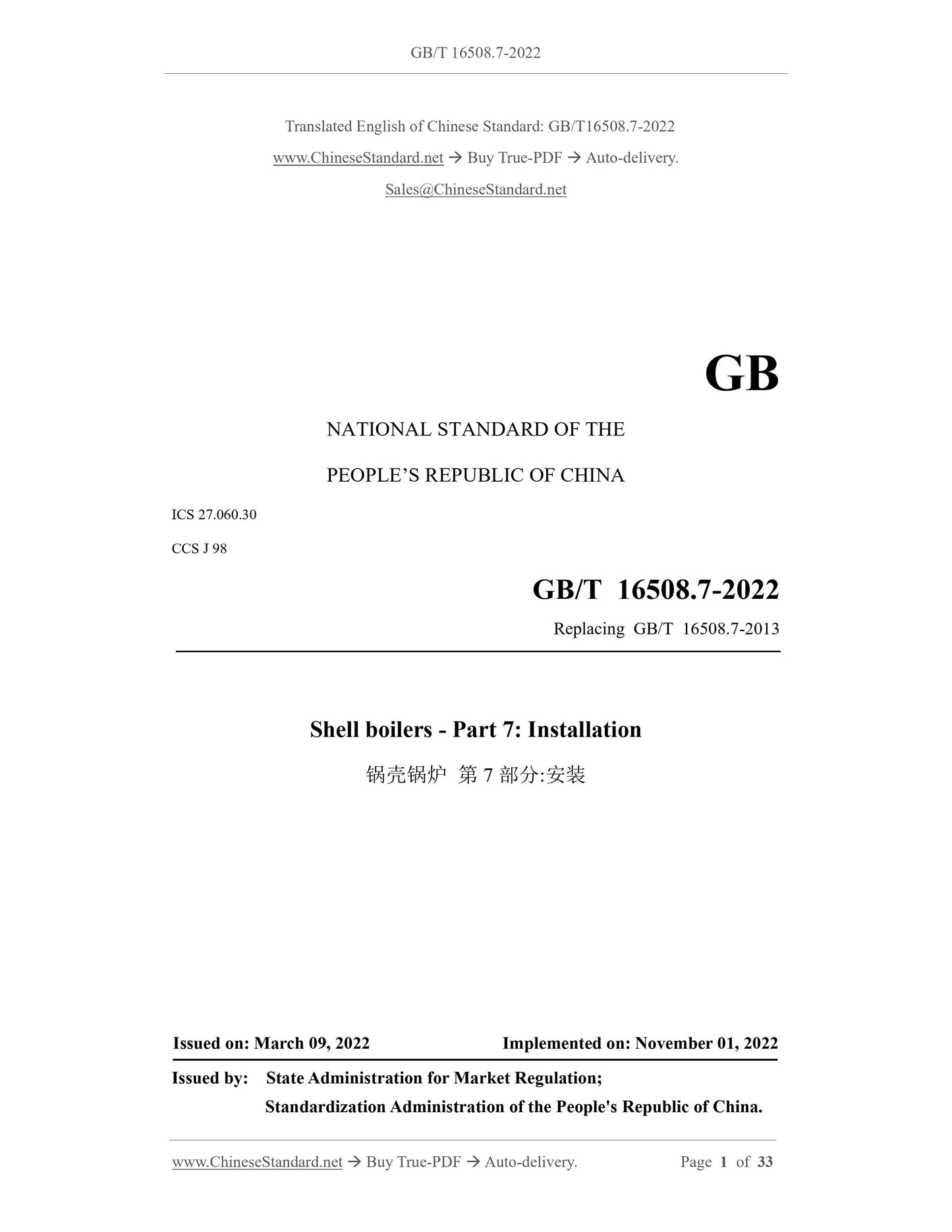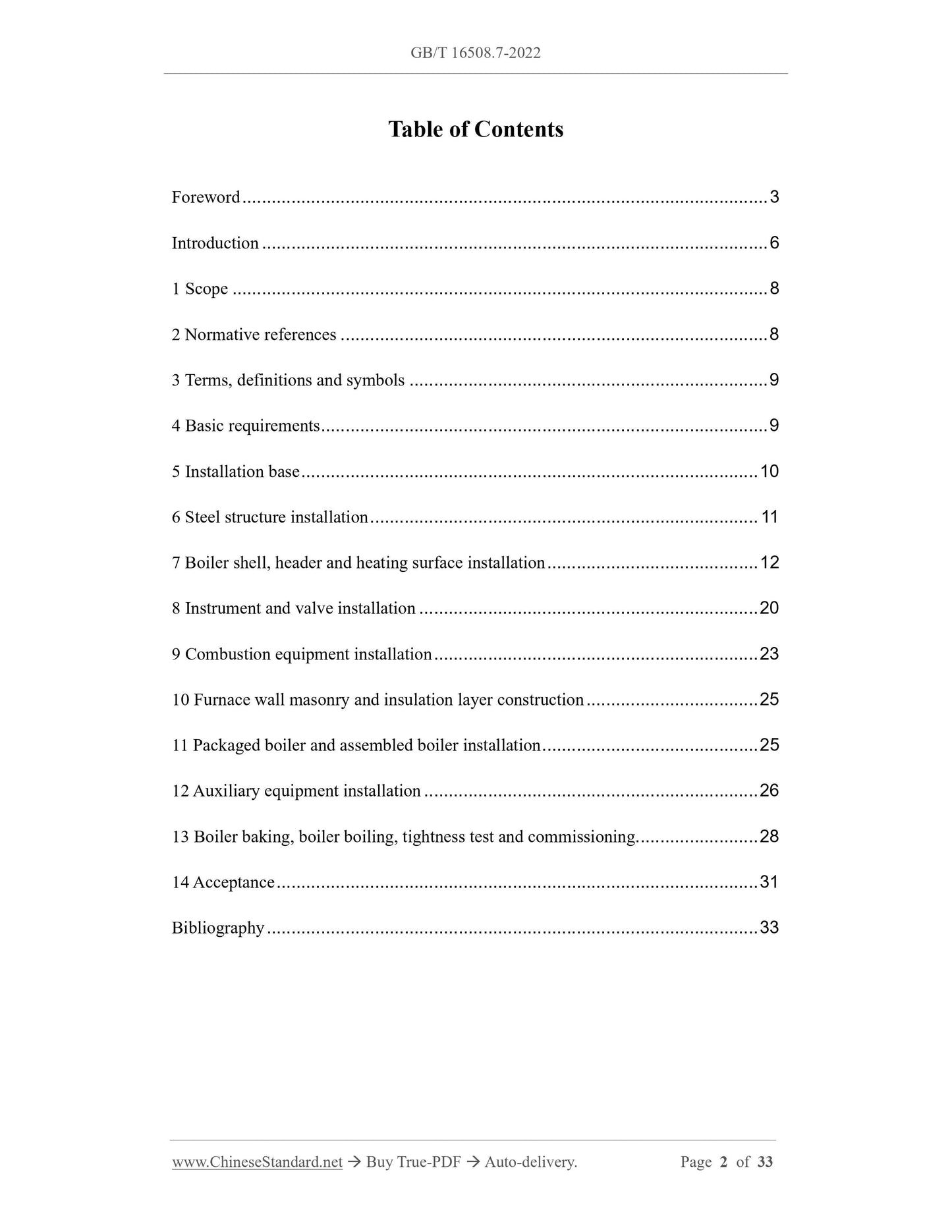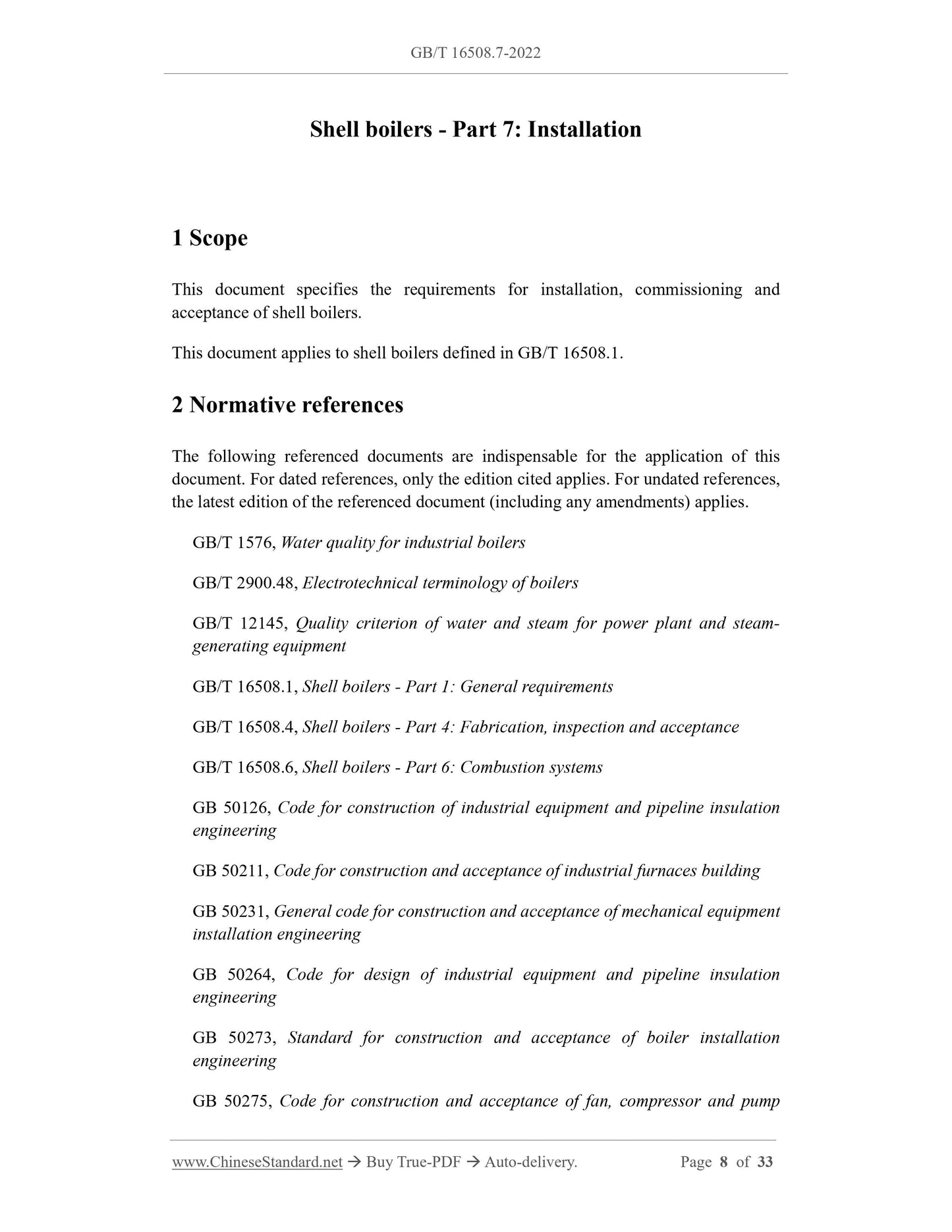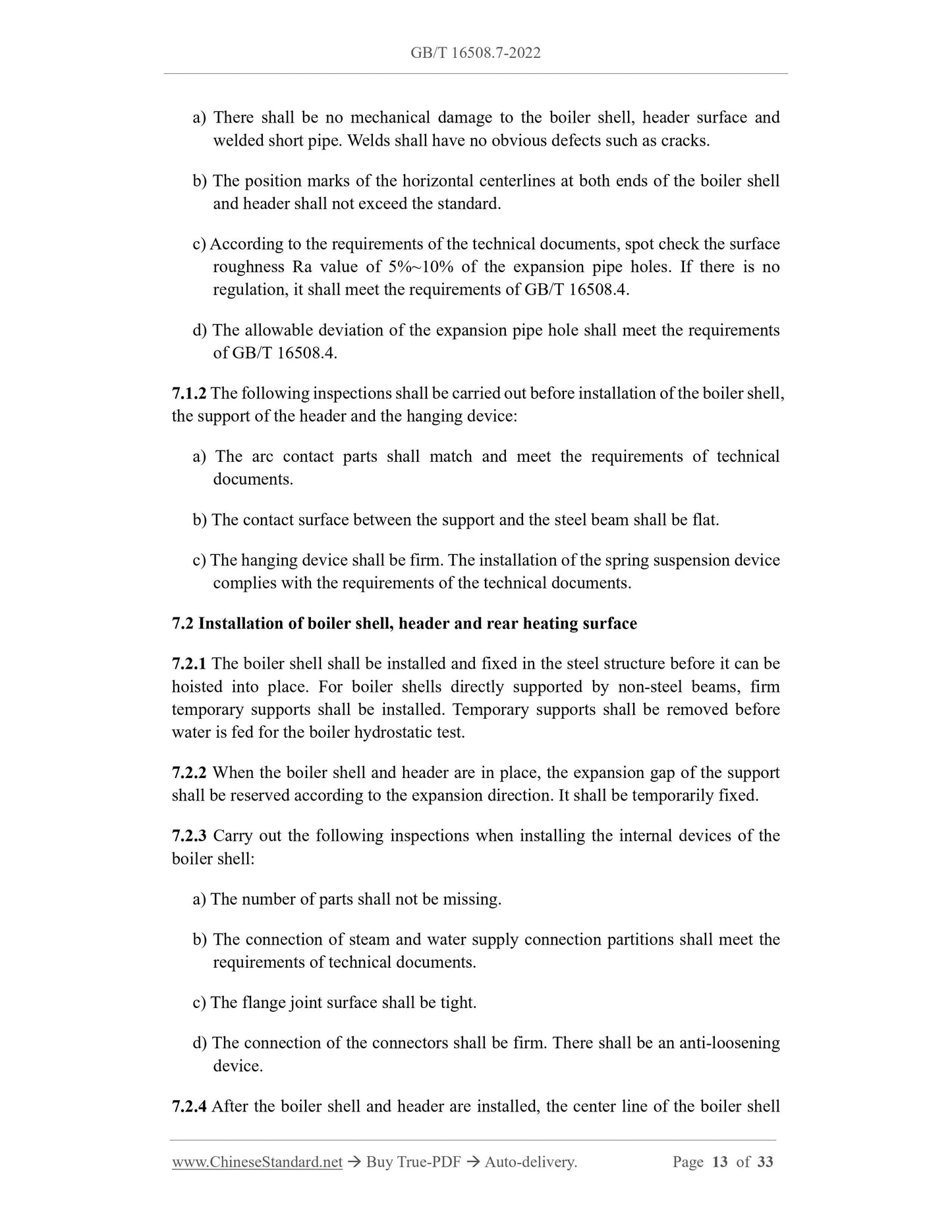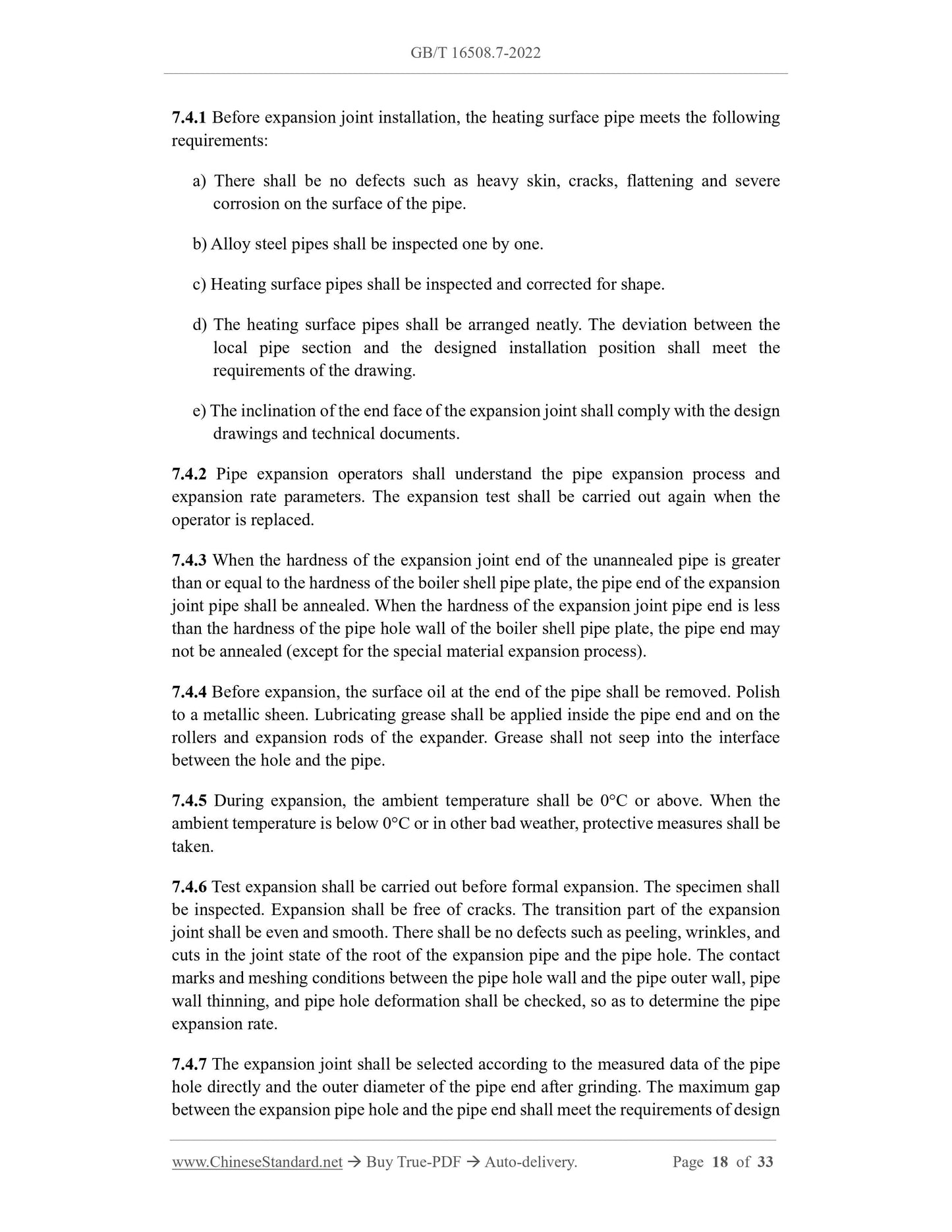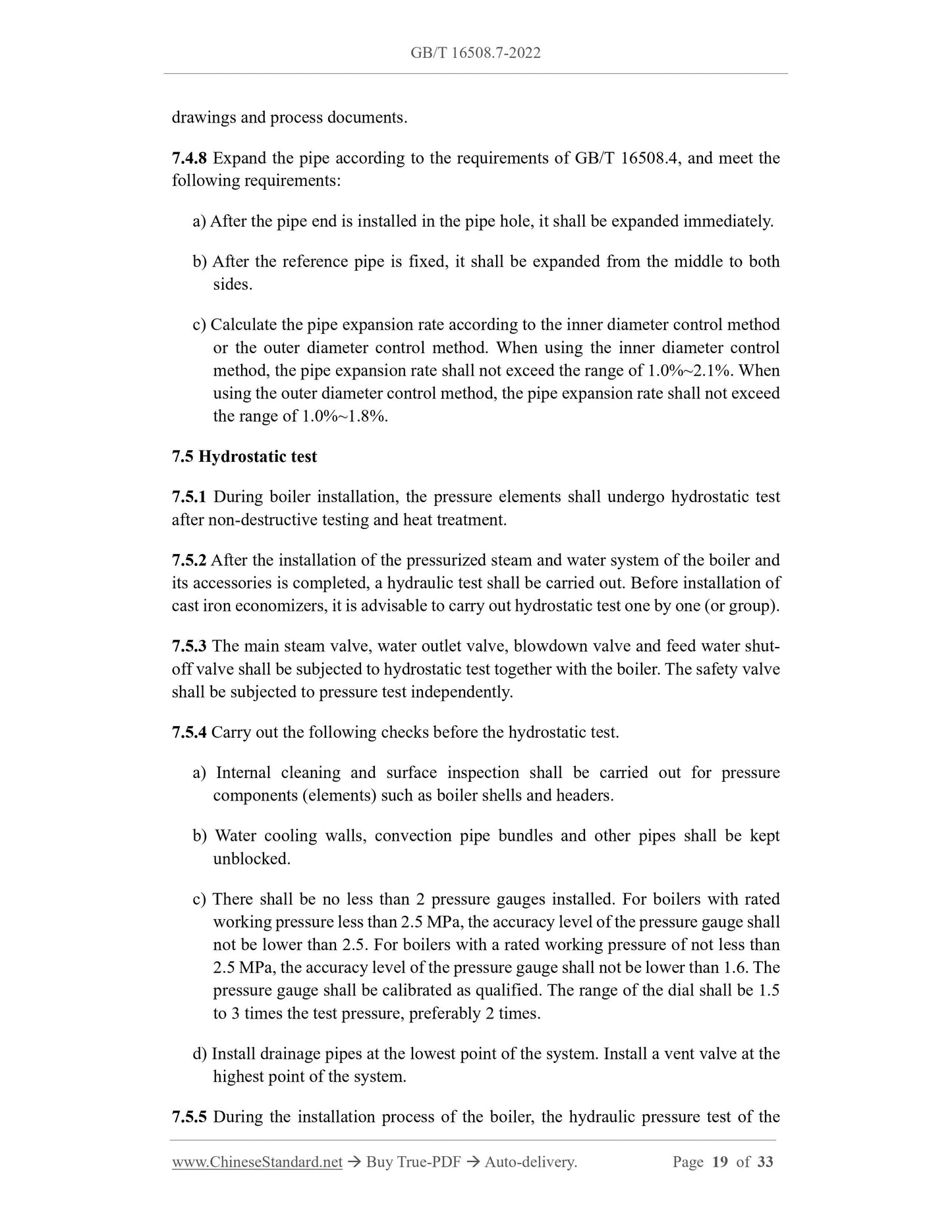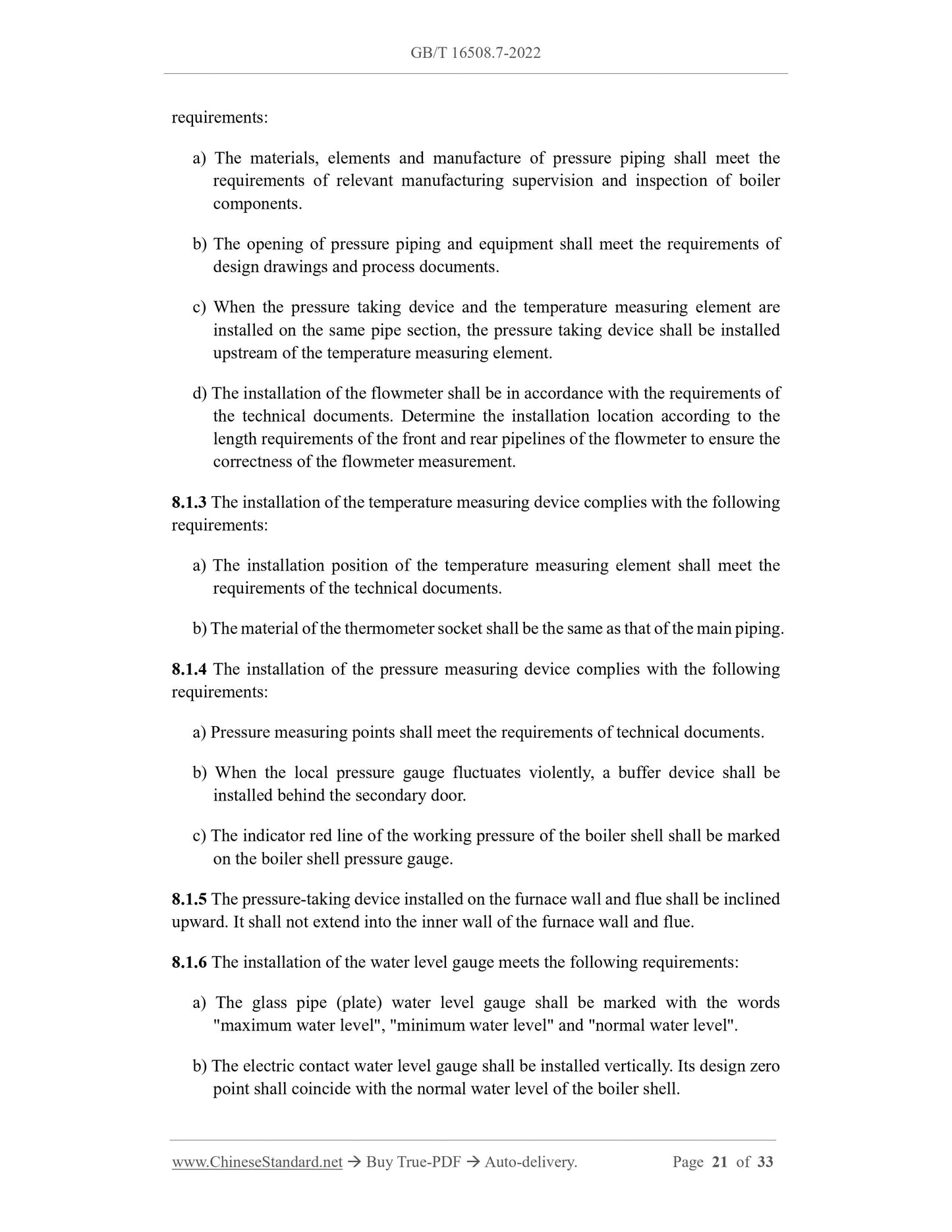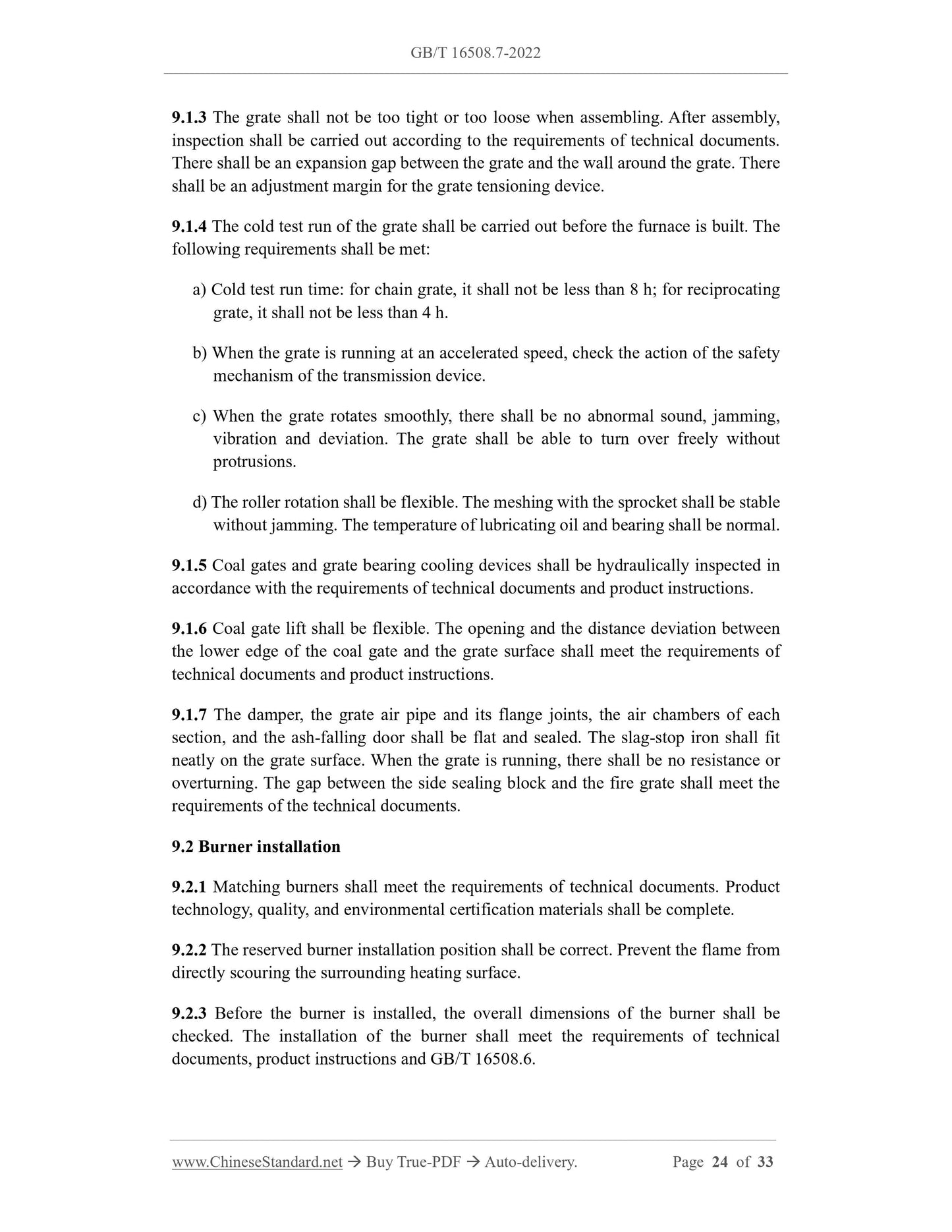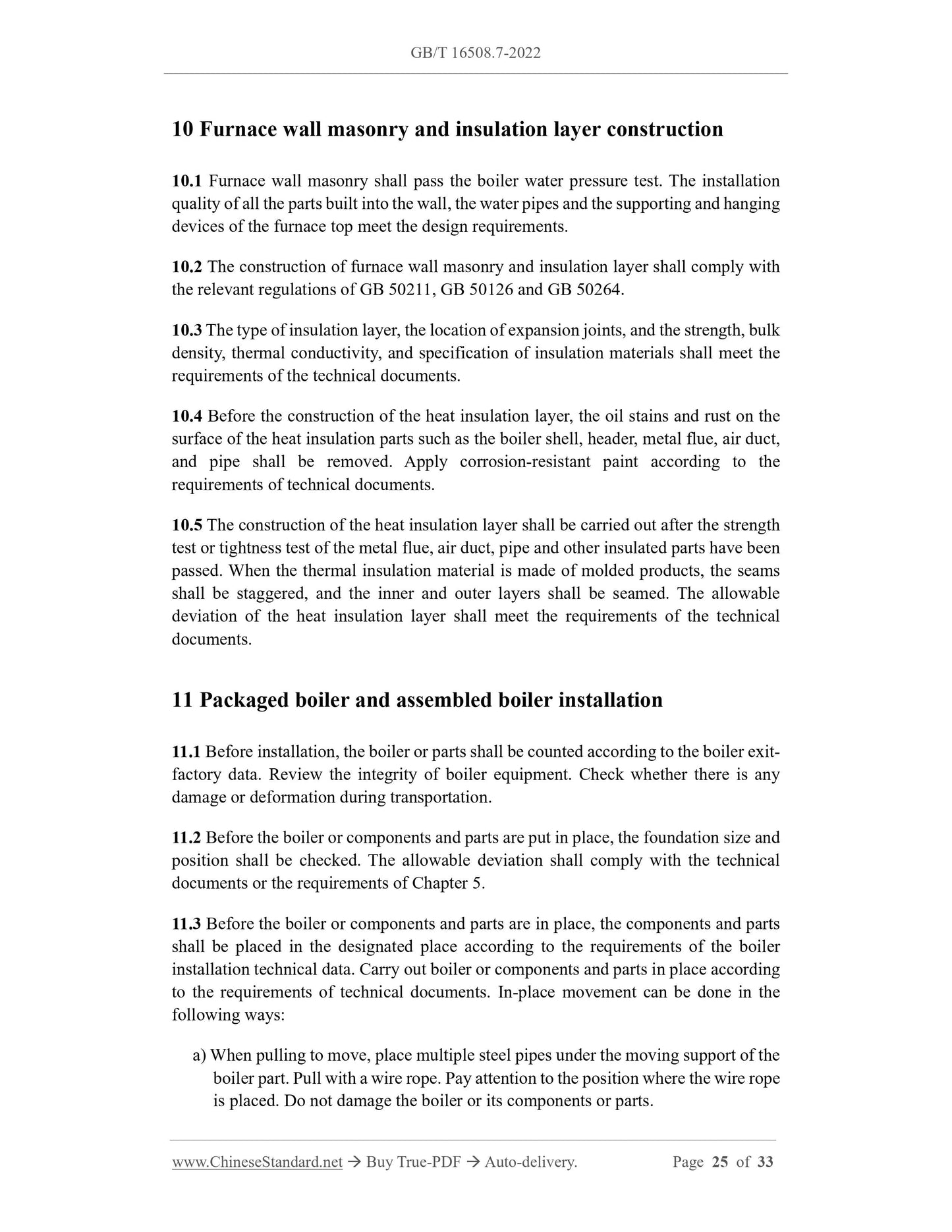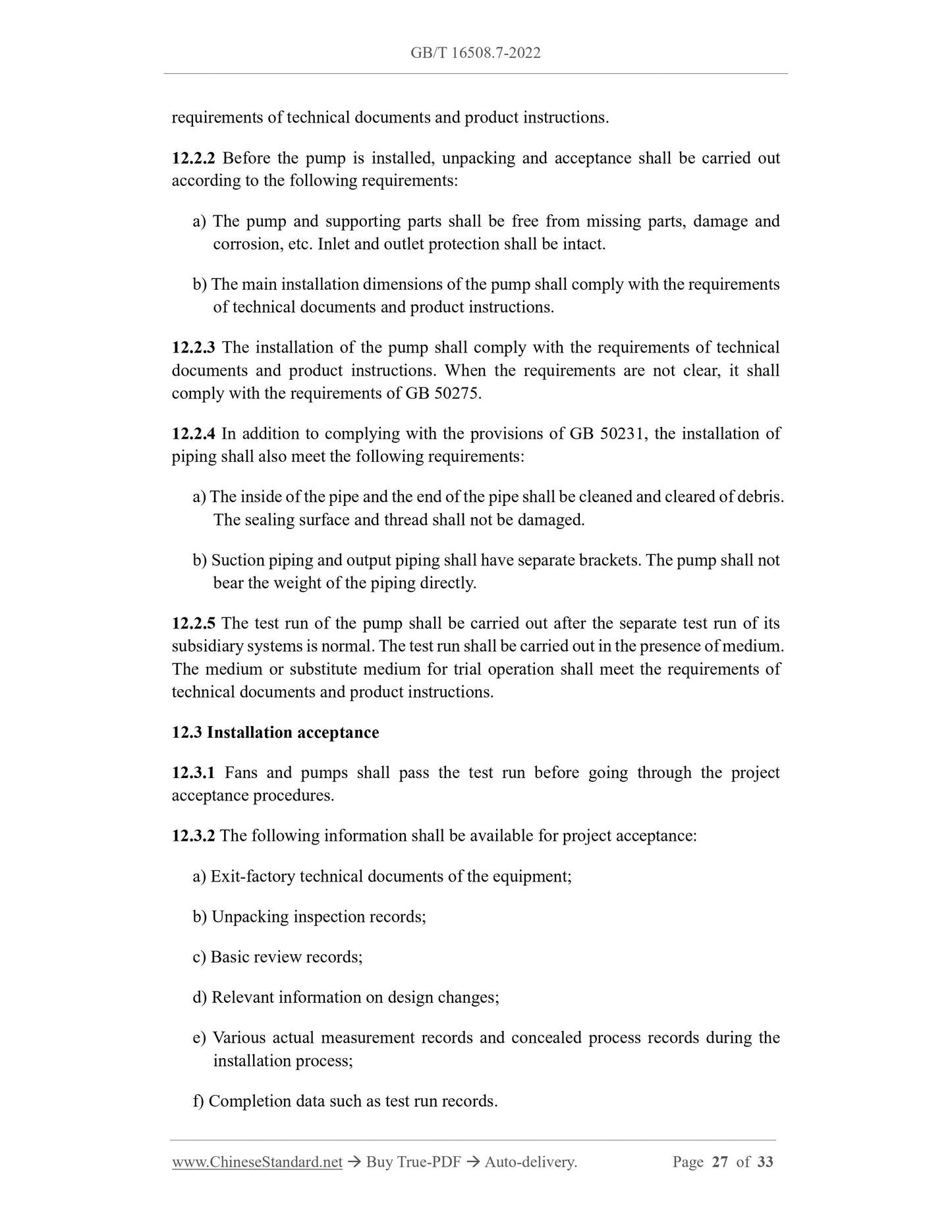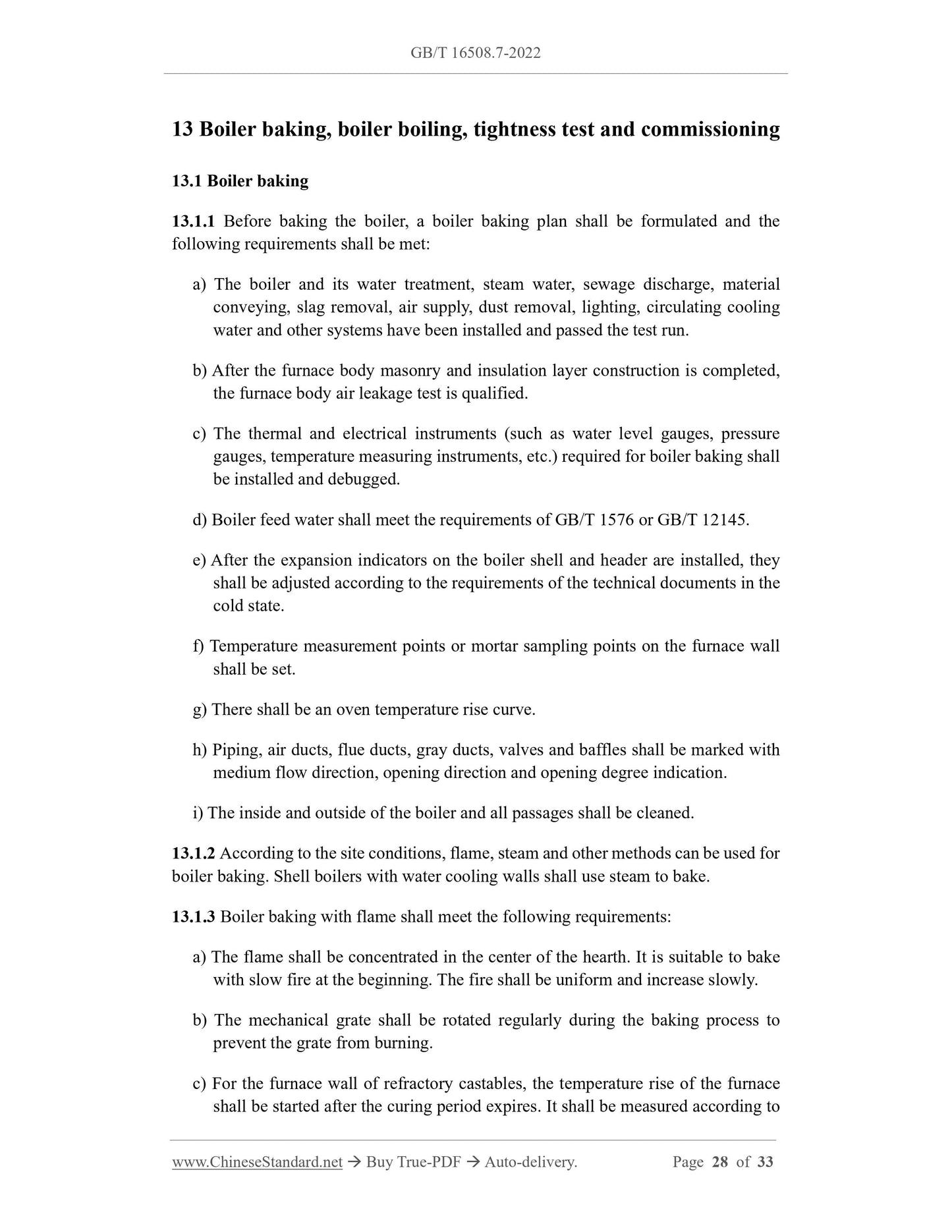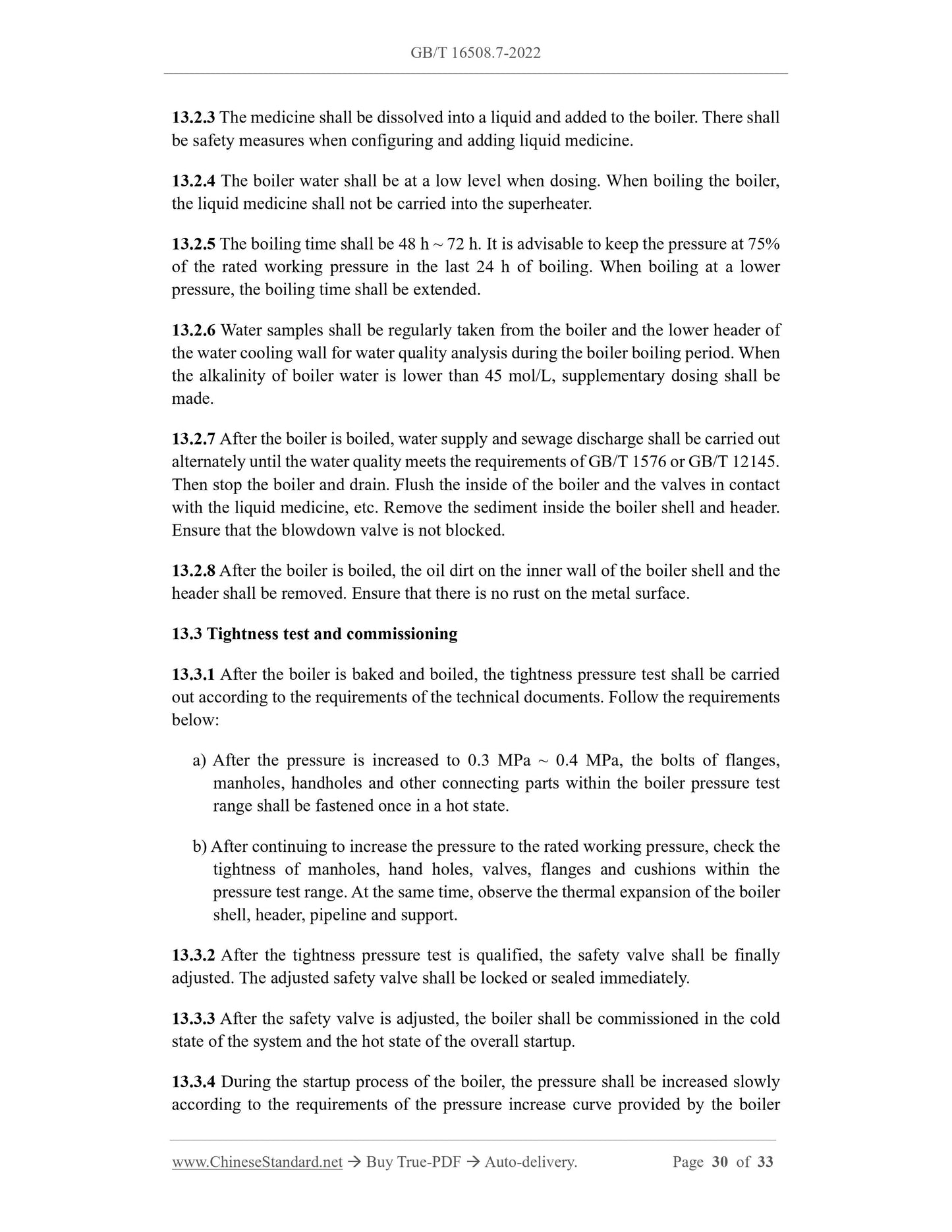1
/
of
12
www.ChineseStandard.us -- Field Test Asia Pte. Ltd.
GB/T 16508.7-2022 English PDF (GB/T16508.7-2022)
GB/T 16508.7-2022 English PDF (GB/T16508.7-2022)
Regular price
$290.00
Regular price
Sale price
$290.00
Unit price
/
per
Shipping calculated at checkout.
Couldn't load pickup availability
GB/T 16508.7-2022: Shell boilers - Part 7: Installation
Delivery: 9 seconds. Download (and Email) true-PDF + Invoice.Get Quotation: Click GB/T 16508.7-2022 (Self-service in 1-minute)
Newer / historical versions: GB/T 16508.7-2022
Preview True-PDF
Scope
This document specifies the requirements for installation, commissioning andacceptance of shell boilers.
This document applies to shell boilers defined in GB/T 16508.1.
Basic Data
| Standard ID | GB/T 16508.7-2022 (GB/T16508.7-2022) |
| Description (Translated English) | Shell boilers - Part 7: Installation |
| Sector / Industry | National Standard (Recommended) |
| Classification of Chinese Standard | J98 |
| Word Count Estimation | 22,226 |
| Issuing agency(ies) | State Administration for Market Regulation, China National Standardization Administration |
Share
